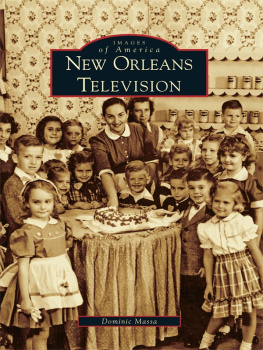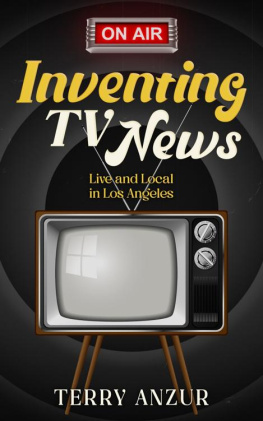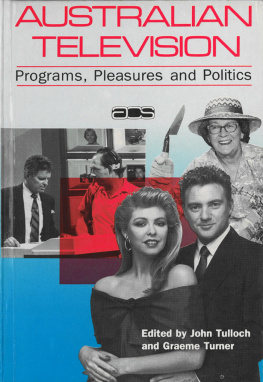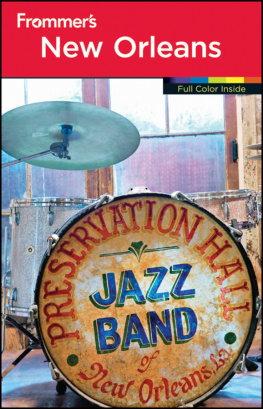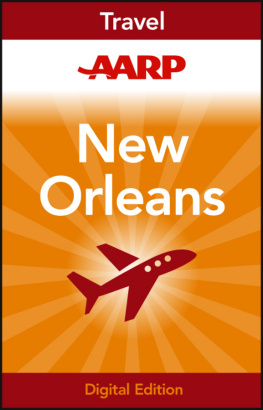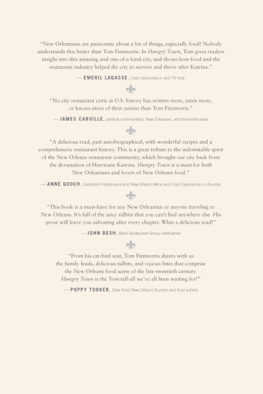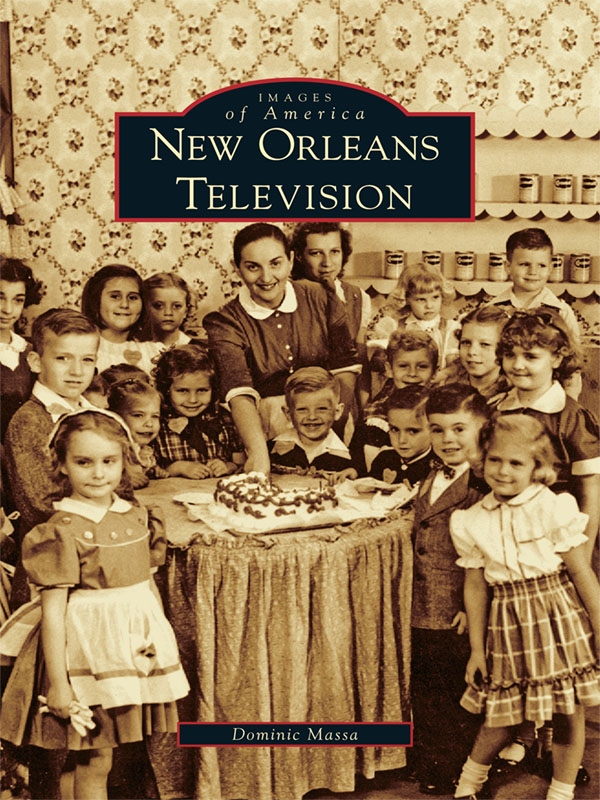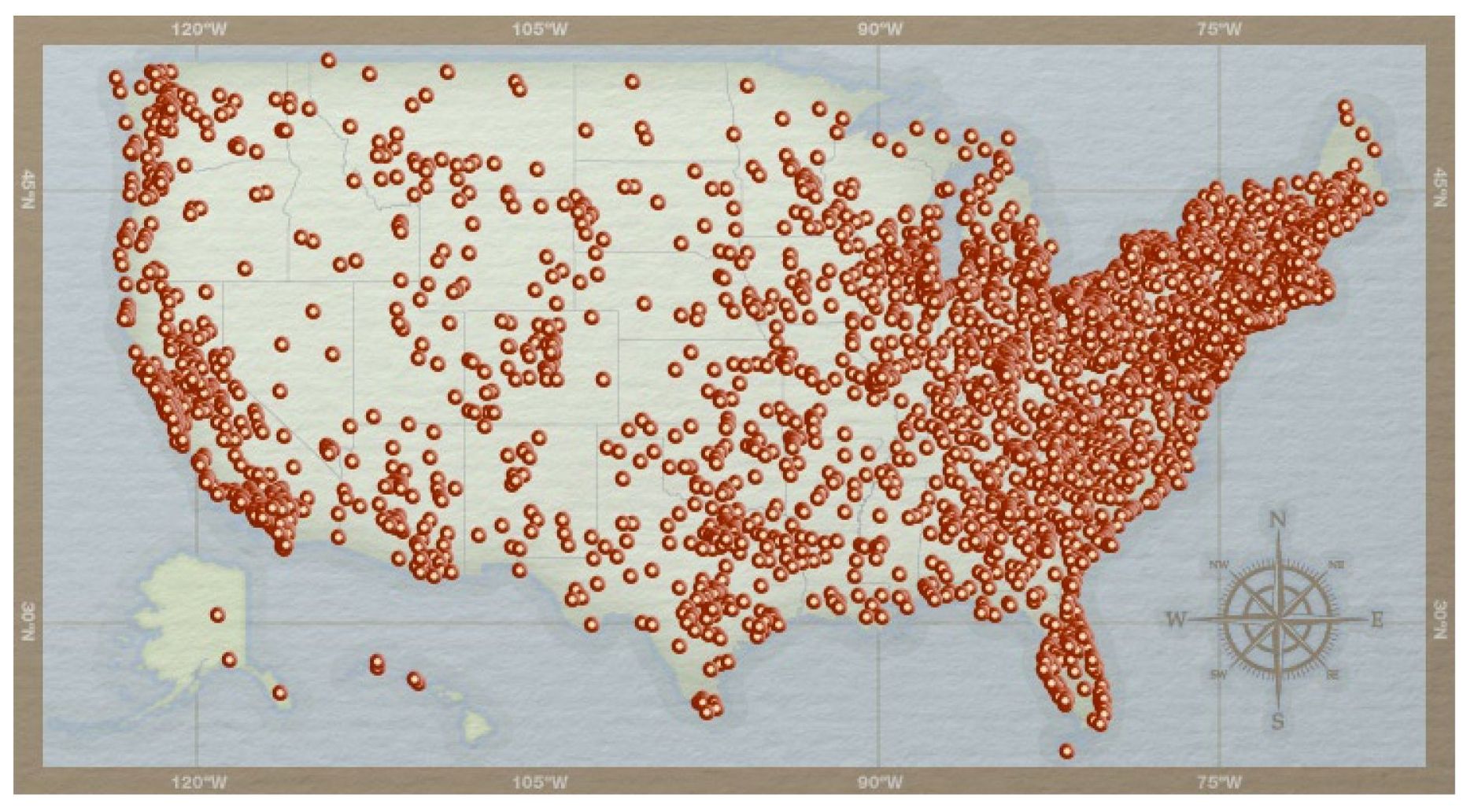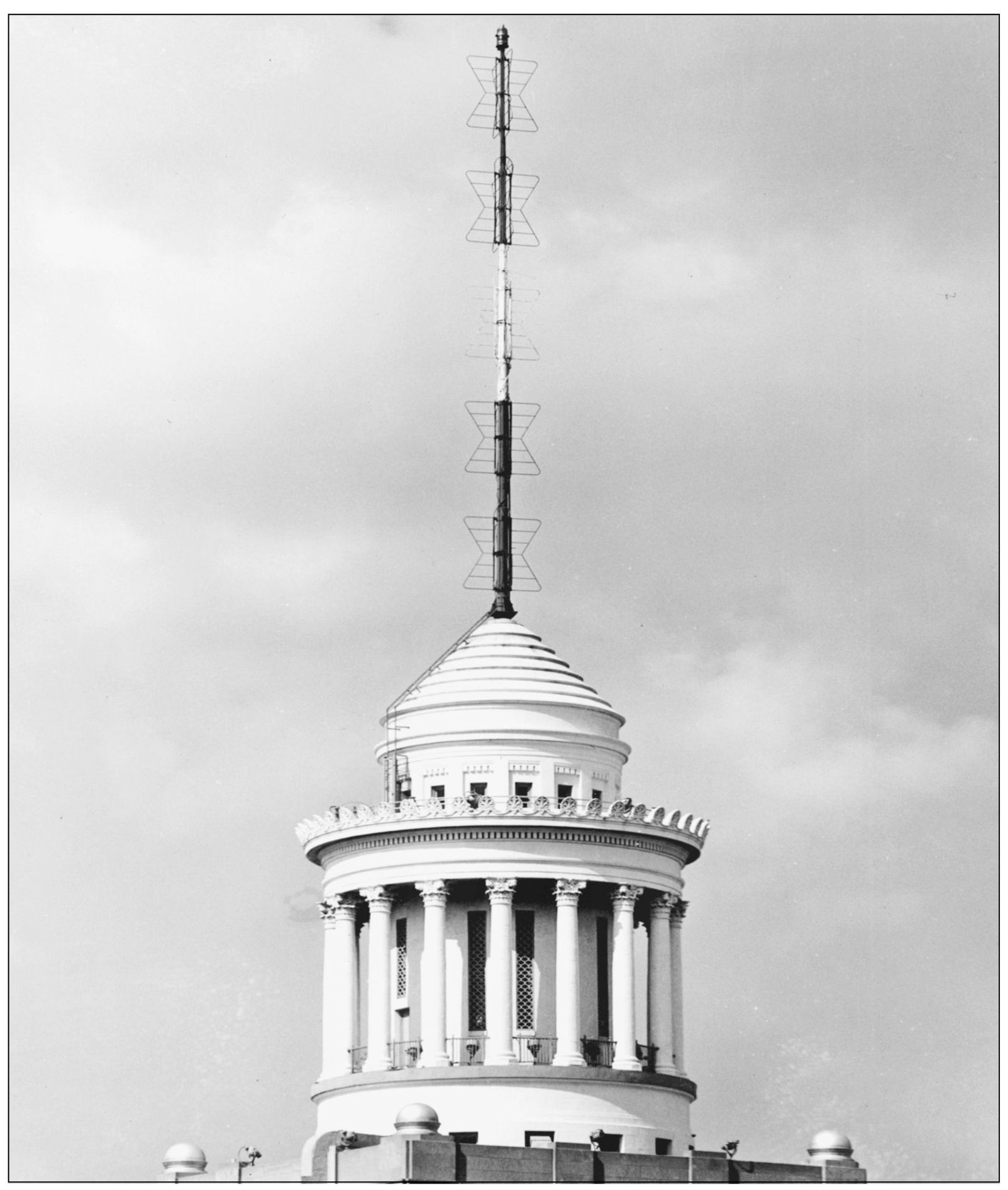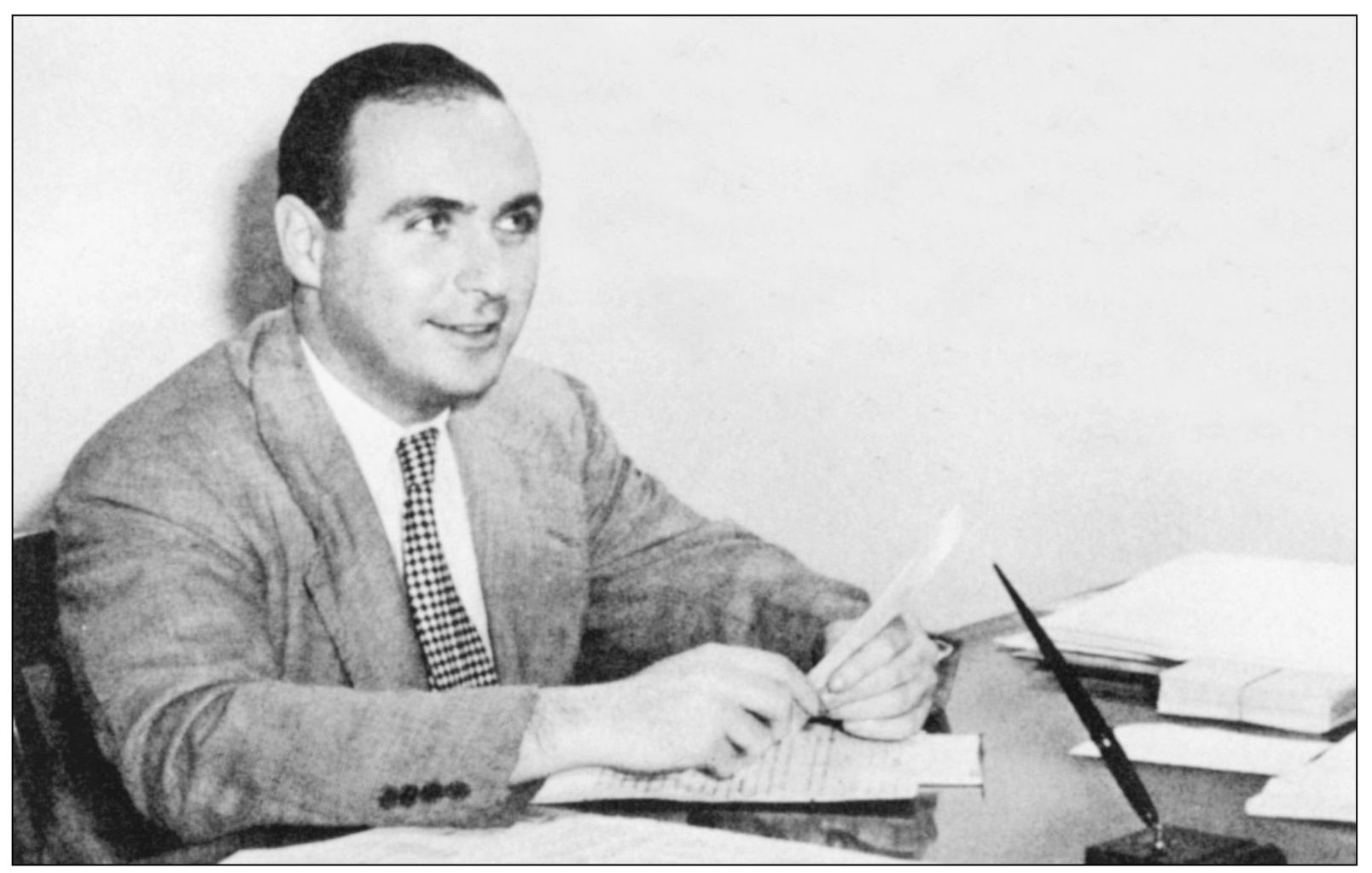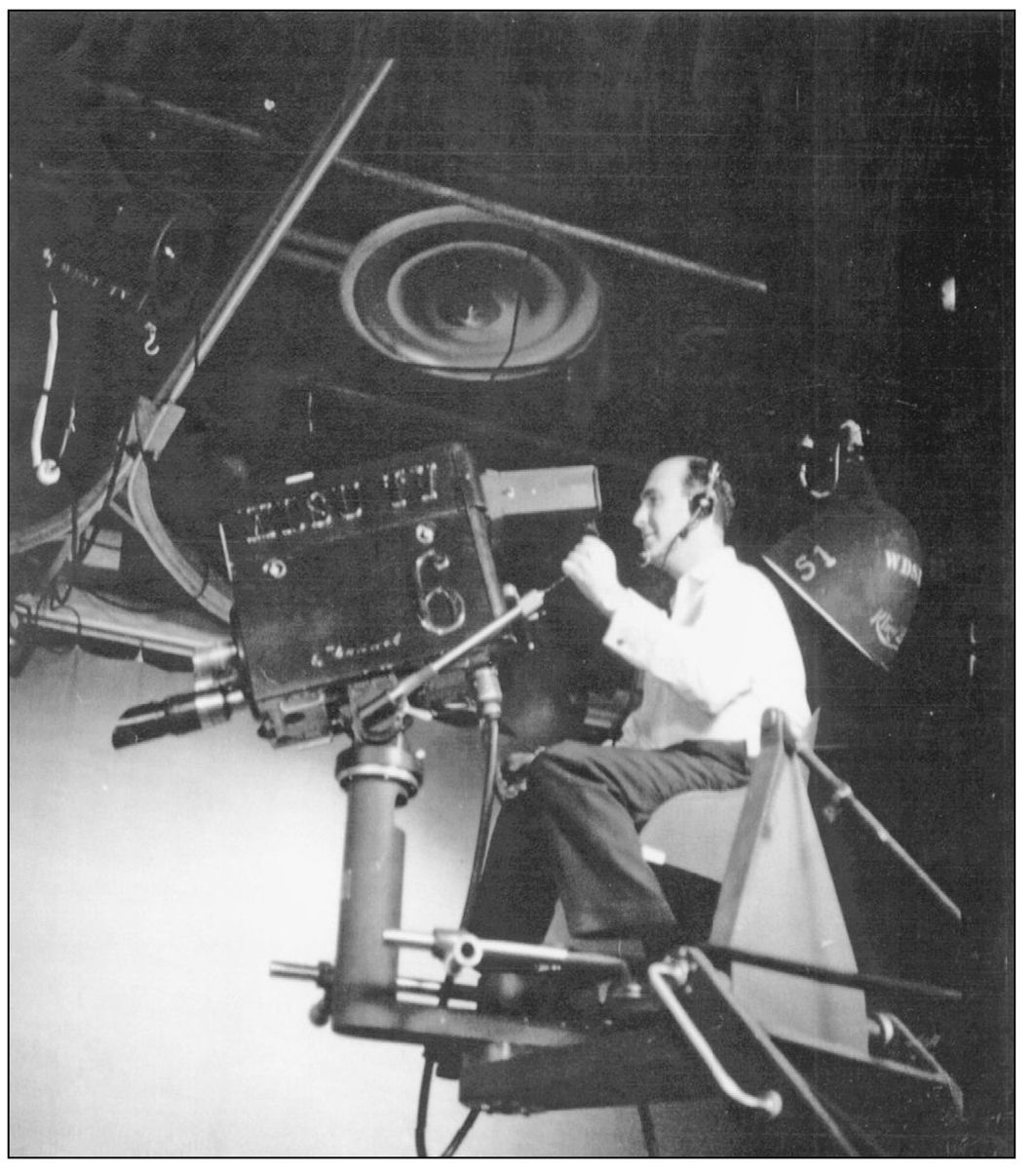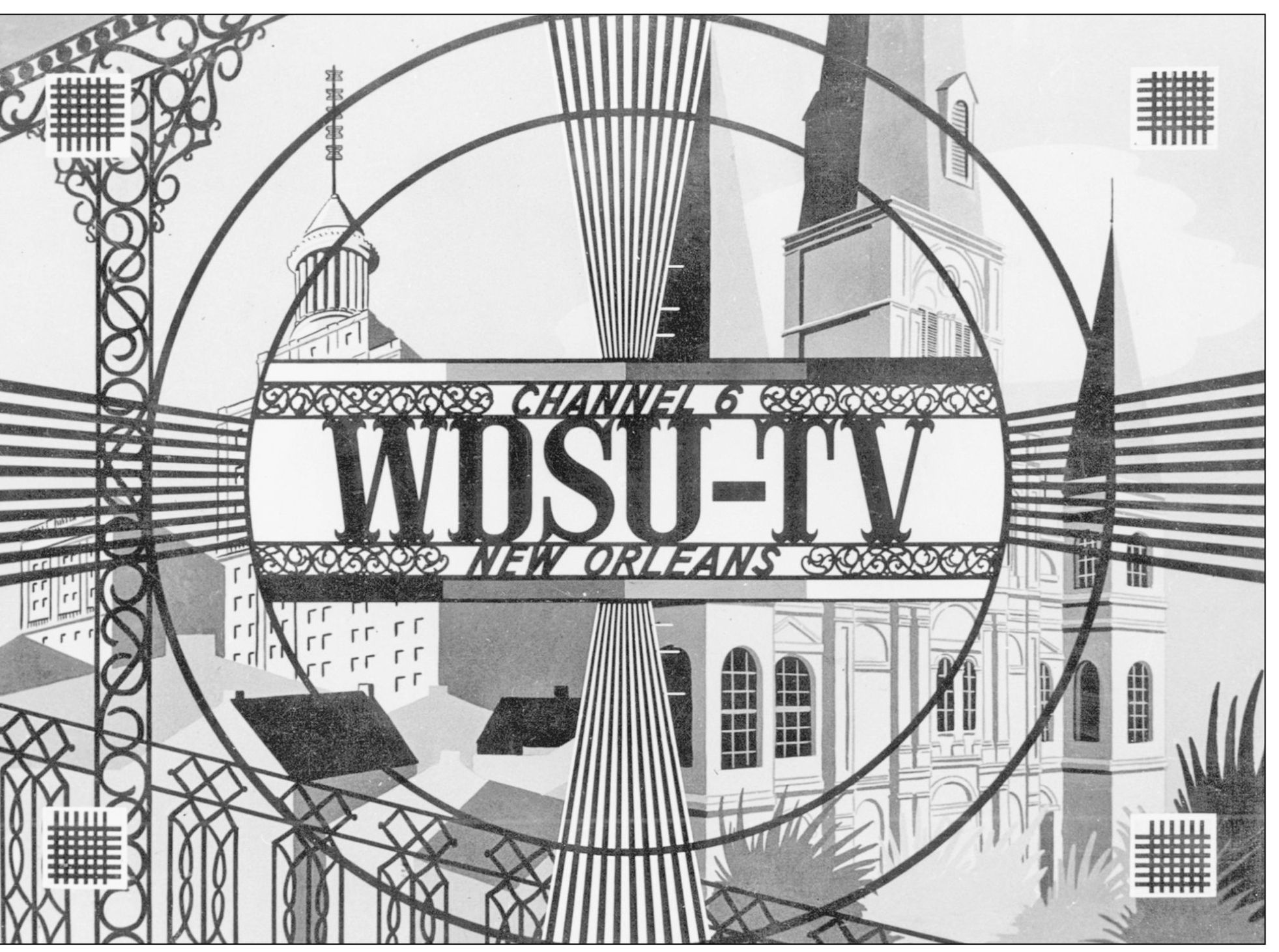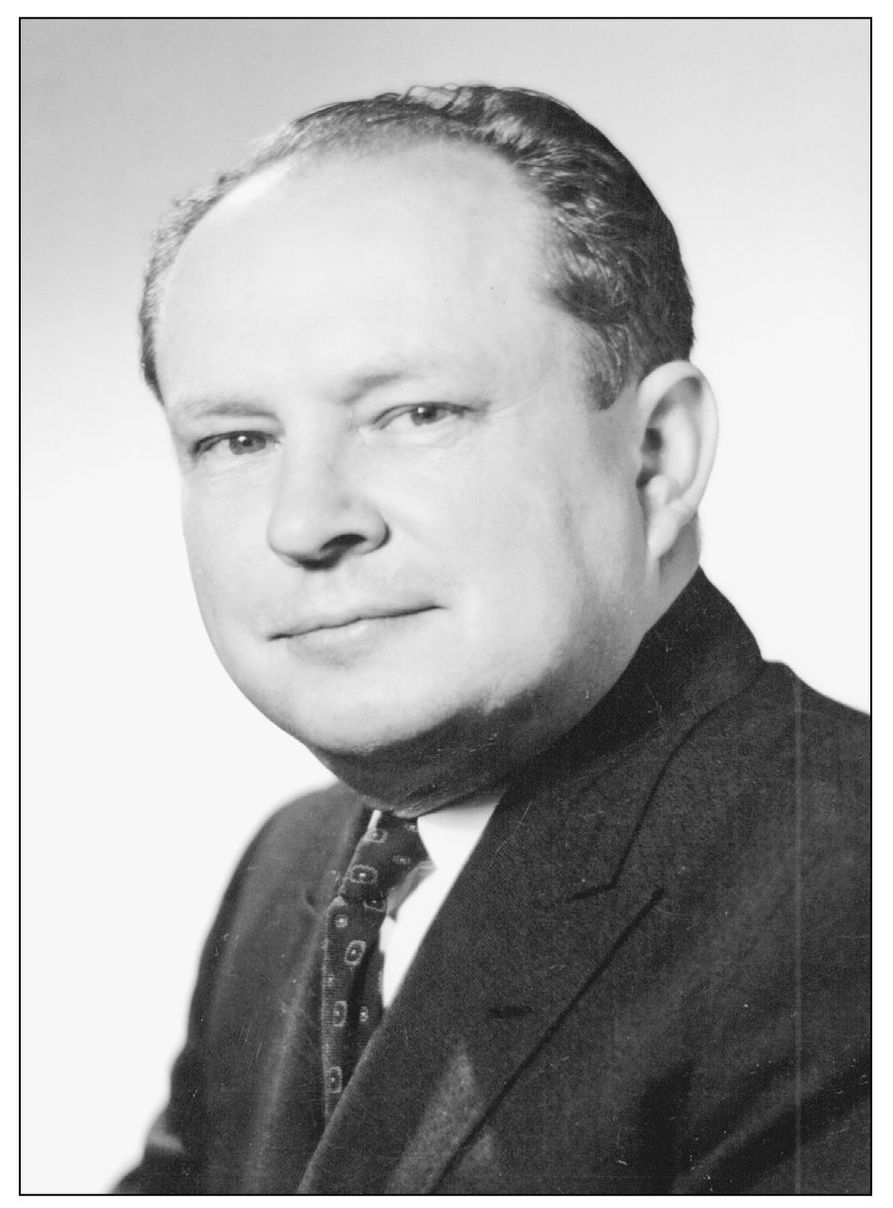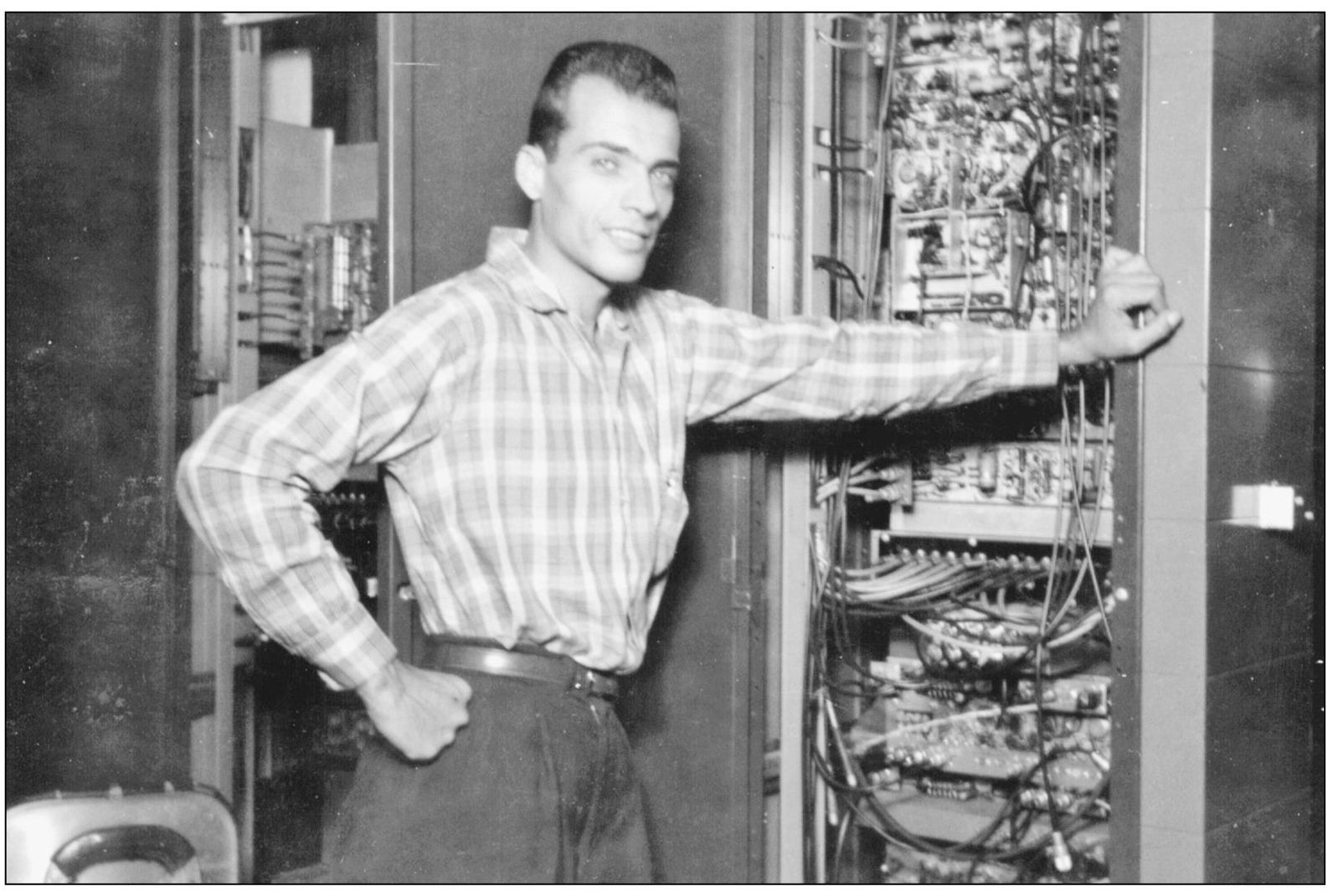ACKNOWLEDGMENTS
While television is a visual medium, it is also a fleeting one, and so many of the memories of local televisions golden age are just thatmemories, without any photographs to help us remember. Thankfully, we do have dozens to share because of the efforts of pioneers who took it upon themselves to preserve the history.
At the top of the list is Paul Yacich, who was with WDSU-TV from the beginning. My deepest thanks go to him for sharing his many photographs and memories, as well as his friendship. I am also indebted to Joe Bergeron of Bergeron Studio and Gallery for sharing his vast collection of photographs.
Among the many others who shared photographs are Joe Budde, Bob and Jan Carr, Suzi Fontaine, Cathy Jacob Gaffney, Phil and Freida Johnson, John Pela, Terry Flettrich Rohe, Al Shea, and Don Westbrook.
I must thank my family, in particular my parents, Diane and Joe Massa, whose loving support means everything.
Beth Arroyo Utterback, Peggy Scott Laborde, and Errol Laborde, who helped launch my television career as a WYES-TV intern, have remained dear friends. As with everything I do, they have given important guidance and encouragement.
At WWL-TV, my thanks go to Bud Brown and Chris Slaughter for their support. Also special thanks to Jimmie Phillips, Sandy Breland, and Mark Swinney, as well as to Angela Hill and J. Michael Early, two beloved figures whose talents have made WWL the amazing television station it is today.
Even though I work for their competition, the management at WDSU-TV has been supportive. Thanks to Joel Vilmenay and Mason Granger.
Many talented colleagues and friends at WYES contributed to this project during the production of the documentaries New Orleans TV: The Golden Age and Stay Tuned: New Orleans Classic TV Commercials . Thanks to Larry Roussarie, Maria D. Estevez, Hal Pluche, Kathy Burns, and Mark Larson for sharing their artistic talents. My appreciation also goes to general manager Randy Feldman.
I must thank the writers at the Times-Picayune , whose work on this topic has educated and inspired me over the years: Mark Lorando, Benjamin Morrison, Renee Peck, Dave Walker, and especially David Cuthbert.
Finally, thanks to the team at Arcadia Publishing and editor Katie Stephens, who helped turn a television producers ideas into a book, something that sounds easier than it is.
Find more books like this at
www.imagesofamerica.com
Search for your hometown history, your old
stomping grounds, and even your favorite sports team.
One
ON THE AIR
The year is 1948, and in New Orleans, many people havent even seen a television set, much less owned one. Even if they have, there arent many programs to tune in tofor now. That all changes when WDSU signs on the air December 18, 1948, with a live broadcast from the Municipal Auditorium. WDSU is the first television station in Louisiana, the sixth in the South, and the 48th in the United States.
Channel 6 had somewhat humble beginnings but deep pockets, since its owner, Edgar Stern Jr., came from a wealthy family who was determined to help launch the young man on a career. Stern and chief engineer Lindsey Riddle would lead the team that helped build the station from scratch. Most of them had a background in radio but little experience in television.
The early crew helped put an antenna atop the Hibernia Bank, then the tallest building in town, and set up studios there and at the D. H. Holmes and Werleins department stores to help sell New Orleanians on the new technology.
One of the early staffers who helped produce and host those first demonstration programs was a local radio star named Terry Flettrich. She remembers running around D. H. Holmes wearing black, white, and gray makeup, at the time believed to be preferable for performers who would be seen on the small black-and-white television sets.
In its early years, the station would help build the careers of television icons named Mel Leavitt, Nash Roberts, Bill Monroe, Alec Gifford, and even a future comedy star named Dick Van Dyke.
During its first nine years on the air, Channel 6 was the only station in town. For that reason, it was able to build a bond with viewers that would be hard to break. But the Jesuits of Loyola University, who had pioneered radio broadcasting in Louisiana with WWL in 1922, were willing to try. In 1957, Loyola introduced WWL-TV Channel 4. Like their WDSU counterparts, many of the early WWL stars, including Jill Jackson and Henry Dupre, had built their careers in radio, which eased their transition to the small screen.
When WDSU signed on the air in 1948, its antenna was placed atop the tallest building in town, the Hibernia Bank building on Carondelet Street, which also housed the stations control room, studios, and offices. (Paul Yacich collection.)
WDSU owner Edgar Stern Jr. was guided into the broadcasting business by his father, Edgar Bloom Stern, and Lester Kabacoff, the elder Sterns attorney and executive assistant. The two men helped nudge Stern into television after he returned home from World War II, where he was a radar engineer. (Authors collection.)
Edgar Stern Jr.s fascination with the technical side of television helped WDSU earn its position as the citys preeminent station in the 1950s and 1960s. Stern, shown here behind a WDSU camera, helped build the stations reputation for quality programming and news coverage. (Paul Yacich collection.)
This is many New Orleanians earliest memory of television in the city: the WDSU-TV test pattern. For the first few months the station was on the air, this French Quarter balcony scene was transmitted for most of the morning to allow viewers and technicians installing new sets across the city to make adjustments to their picture. (Paul Yacich collection.)
WDSU chief engineer Lindsey Riddle was with the station from the beginning, helping to lead the team that installed and tested the technology needed to begin broadcasting in 1948. (Paul Yacich collection.)
Paul Yacich began his association with WDSU in 1947 as an engineer with WDSU radio. He helped build the new WDSU-TV facility in 1948 and later became a member of the production department as an award-winning producer and director. (Paul Yacich collection.)

